News
INCITE Awards 351 Million Core Hours to Martin Berzins and Team
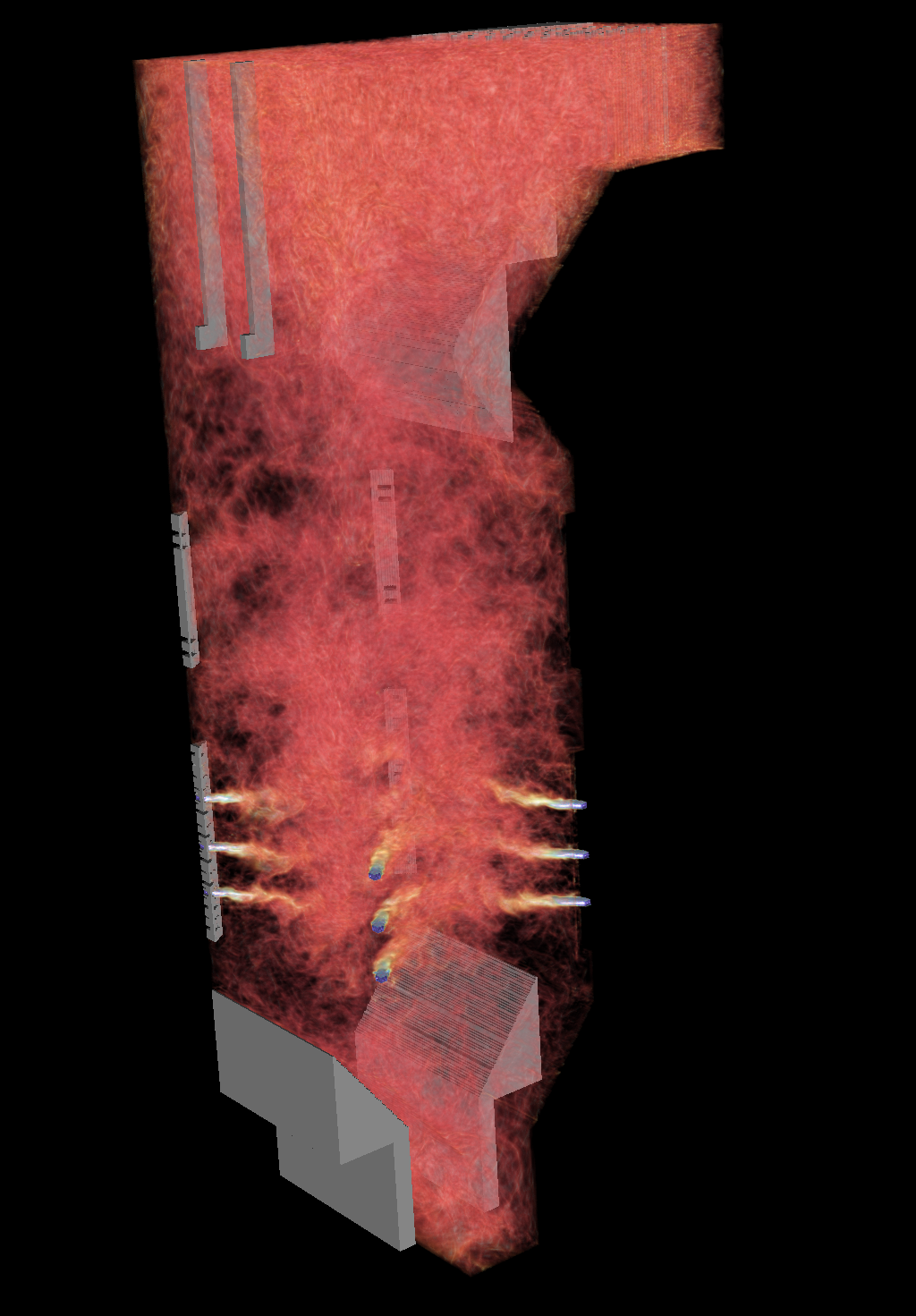 INCITE Grants Awarded to 56 Computational Research Projects
INCITE Grants Awarded to 56 Computational Research ProjectsNewswise — OAK RIDGE, Tenn., Nov. 16, 2015–The U.S. Department of Energy's Office of Science announced 56 projects aimed at accelerating discovery and innovation to address some of the world's most challenging scientific questions. The projects will share 5.8 billion core hours on America's two most powerful supercomputers dedicated to open science. The diverse projects will advance knowledge in critical areas ranging from sustainable energy technologies to next-generation materials.
Valerio Pascucci on Cool Science Radio
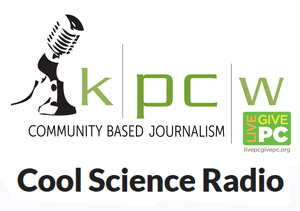 Valerio Pascucci, Professor, from the School of Computing and Alessandra Angelucci, Professor of Ophthalmology and Visual Science featured on KCPW and Cool Science Radio.
Valerio Pascucci, Professor, from the School of Computing and Alessandra Angelucci, Professor of Ophthalmology and Visual Science featured on KCPW and Cool Science Radio.You can listen to the podcast here.
Three Grants, Totaling Over $10 Million Awarded to Prof. Chris Butson and Collaborators
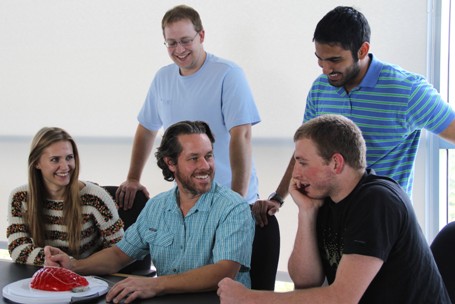 Over $10 Million in grants from three federal organizations have been awarded to Christopher R. Butson, PhD, associate professor of bioengineering and a member of the Scientific Computing and Imaging Institute (SCI). He also holds positions in the departments of neurology and neurosurgery and is the Director of Neuromodulation Research for the Department of Neurosurgery and works with teams of researchers at the University of Utah and other institutions in the U.S. and Germany.
Over $10 Million in grants from three federal organizations have been awarded to Christopher R. Butson, PhD, associate professor of bioengineering and a member of the Scientific Computing and Imaging Institute (SCI). He also holds positions in the departments of neurology and neurosurgery and is the Director of Neuromodulation Research for the Department of Neurosurgery and works with teams of researchers at the University of Utah and other institutions in the U.S. and Germany.The National Institutes of Health (NIH) has awarded funds for a clinical study on central thalamic deep brain stimulation for traumatic brain injury. This clinical study is led by Butson and other teams including Nicholas Schiff M.D. at Cornell University, Joseph Giacino Ph.D. at the Spaulding Rehabilitation Hospital in Boston, Jaimie Henderson M.D. at Stanford and Andre Machado M.D. at the Cleveland Clinic. These teams are working on a feasibility study to support a next generation device to provide therapy for the survivors of severe to moderate traumatic brain injury.
NCI Grant for Personalized Cancer Diagnostics and Prognostics to Alter and Team
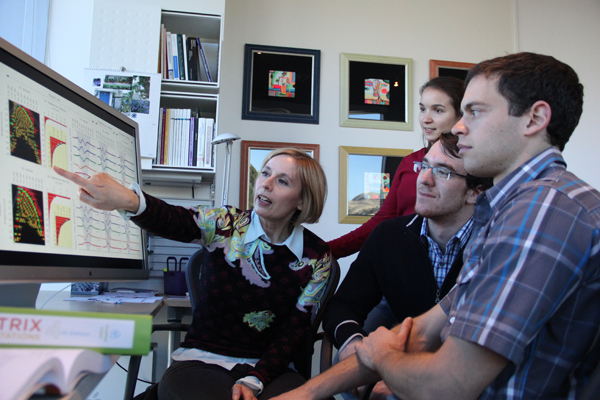 Orly Alter has been awarded a five-year, three million-dollar National Cancer Institute (NCI) grant for the project "Multi-Tensor Decompositions for Personalized Cancer Diagnostics and Prognostics." Co-investigators on her team include pathology professors Cheryl A. Palmer and Carl T. Wittwer, associate professor Elke A. Jarboe, and clinical assistant professor Reha M. Toydemir, and neurosurgery professor Randy L. Jensen.
Orly Alter has been awarded a five-year, three million-dollar National Cancer Institute (NCI) grant for the project "Multi-Tensor Decompositions for Personalized Cancer Diagnostics and Prognostics." Co-investigators on her team include pathology professors Cheryl A. Palmer and Carl T. Wittwer, associate professor Elke A. Jarboe, and clinical assistant professor Reha M. Toydemir, and neurosurgery professor Randy L. Jensen. Alter, a bioengineering associate professor and a faculty member of the Scientific Computing and Imaging Institute, pioneered the matrix and tensor modeling of large-scale molecular biological data, which have been demonstrated to correctly predict previously unknown cellular mechanisms.
For more see the project website at https://physics.cancer.gov/network/UniversityofUtah.aspx.
Speeding up extreme big brain data analysis
Interactive software tool lets brain researchers explore large-scale, high-res imaging to better understand connections in the brain
October 26, 2015It's tough to unravel the mysteries of the brain when your computer is frozen.
To aid frustrated brain researchers, a multidisciplinary team of scientists at the University of Utah has created a faster method for generating and exploring high-resolution, 3-D images of the brain.
3-D map of the brain: Utah researchers develop software to better understand brain’s network of neurons
The animal brain is so complex, it would take a supercomputer and vast amounts of data to create a detailed 3-D model of the billions of neurons that power it.
But computer scientists and a professor of ophthalmology at the University of Utah have developed software that maps out a monkey's brain and more easily creates a 3-D model, providing a more complete picture of how the brain is wired. Their process was announced this week at Neuroscience 2015, the annual Society for Neuroscience meeting in Chicago.
NSF Highlights Chris Butson's New Grant
Gigabit application prototypes to help cities and communities serve citizens better
NSF awards nearly $12 million to expand innovation ecosystem for next-generation Internet applications Credit and Larger Version |
The United States lags behind most developed countries in terms of high-speed Internet availability. Though there are signs this is changing, insufficient investment in gigabit networks--those capable of 1,000 megabits per second, roughly 30 times faster than the networks commonly available today--threatens to limit U.S. leadership in Internet applications and services.
CIBC Renewed for Another Five Years
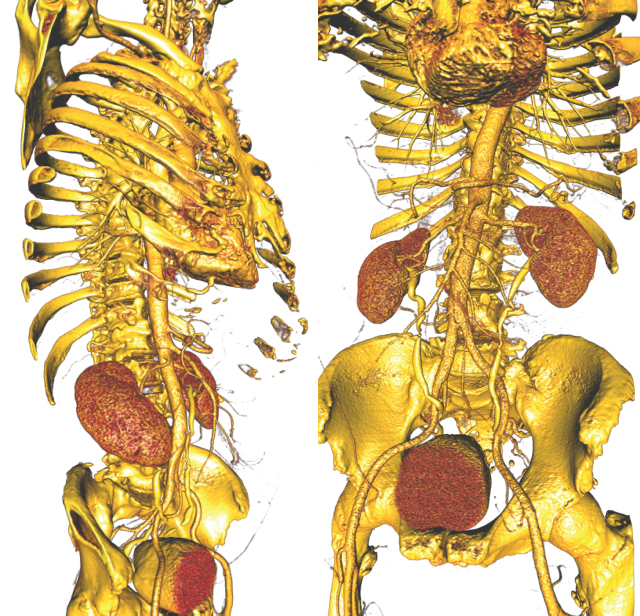 The U's Center for Integrative Biomedical Computing just landed a $6.1 million grant renewal from the National Institutes of Health. The center produces open-source software for image-based modeling, simulation and visualization of biomedical data. Tens of thousands of scientists have downloaded the center's software tools and data sets, and more than 200 papers published by scientists outside the center reference its software or computing infrastructure.
The U's Center for Integrative Biomedical Computing just landed a $6.1 million grant renewal from the National Institutes of Health. The center produces open-source software for image-based modeling, simulation and visualization of biomedical data. Tens of thousands of scientists have downloaded the center's software tools and data sets, and more than 200 papers published by scientists outside the center reference its software or computing infrastructure.The NIH grant has a five year term. The principle investigators are bioengineering professor Rob MacLeod, computer science professor Ross Whitaker, and computer science professor Christopher Johnson, who directs the Scientific Computing and Imaging Institute.
From @theU
Exploring Large Data for Scientific Discovery
More elegant techniques combined with highly interdisciplinary, multi-scale collaboration are essential for dealing with massive amounts of information, plenary speaker says at the XSEDE15 conference.
A curse of dealing with mounds of data so massive that they require special tools, said computer scientist Valerio Pascucci, is if you look for something, you will probably find it, thus injecting bias into the analysis.
XSEDE15 pascucci-sg
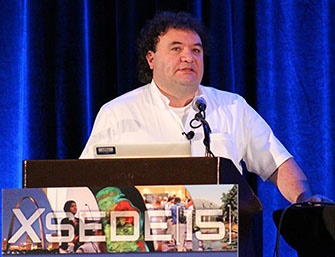 In his plenary talk titled "Extreme Data Management Analysis and Visualization: Exploring Large Data for Science Discovery" on July 28 during the XSEDE15 conference in St. Louis, Dr. Pascucci said that getting clean, guaranteed, unbiased results in data analyses requires highly interdisciplinary, multi-scale collaboration and techniques that unify the math and computer science behind the applications used in physics, biology, and medicine.
In his plenary talk titled "Extreme Data Management Analysis and Visualization: Exploring Large Data for Science Discovery" on July 28 during the XSEDE15 conference in St. Louis, Dr. Pascucci said that getting clean, guaranteed, unbiased results in data analyses requires highly interdisciplinary, multi-scale collaboration and techniques that unify the math and computer science behind the applications used in physics, biology, and medicine.
CIBC launces the new NIH BTRPortal
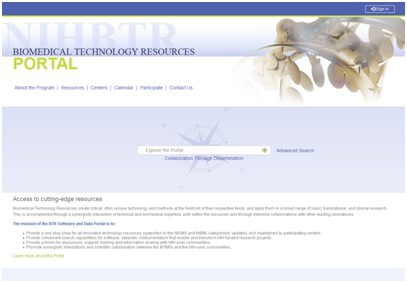 The NIH Center for Integrative Biomedical Computing (CIBC) is pleased to release the National Institutes of Health Biomedical Technology Resource Portal (NIH BTRPortal). The NIH BTRPortal maintains profiles for all National Institute of General Medical Sciences (NIGMS) and National Institute of Biomedical Imaging and Bioengineering (NIBIB) P41 Centers and provides central access to resources developed at these Centers. Recent participation has grown this repository to over 200 software packages and access to over 60 datasets/databases.
The NIH Center for Integrative Biomedical Computing (CIBC) is pleased to release the National Institutes of Health Biomedical Technology Resource Portal (NIH BTRPortal). The NIH BTRPortal maintains profiles for all National Institute of General Medical Sciences (NIGMS) and National Institute of Biomedical Imaging and Bioengineering (NIBIB) P41 Centers and provides central access to resources developed at these Centers. Recent participation has grown this repository to over 200 software packages and access to over 60 datasets/databases.As a result of our funding for this project, the CIBC has developed a custom website in order to manage different user rolls, search scenarios, and the editing and addition of new Centers and their resources. Resources are tagged with the appropriate filters and keywords based on an extensive search through resource descriptions (OS, acceptable data formats, data size, field of research, etc.). It is our hope that participating Centers will create additional keywords to not only aid in finding resources, but also cross-educate other Centers to the nature of their research. It is our further hope that this Portal will enhance collaboration between Centers and leverage the great work that has already been done.
www.btrportal.org
SCIRun 5.0 Released
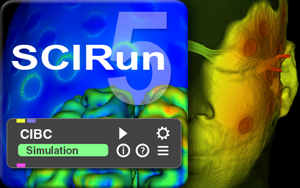 The Scientific Computing and Imaging Institute is excited to announce the first official alpha release of SCIRun 5.0!
The Scientific Computing and Imaging Institute is excited to announce the first official alpha release of SCIRun 5.0!New features include a new user interface based on the cross-platform Qt toolkit, updated graphics and visualization system, improved algorithm stability, expanded test coverage, a leaner and modernized codebase, better math library support through Eigen, and streamlined support for new modules and toolkit development. A Python scripting engine and Matlab interface will be available in our beta release.




